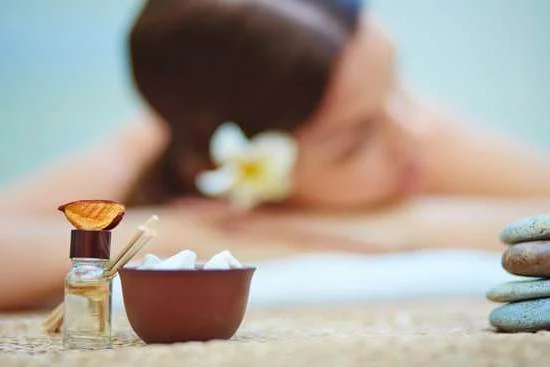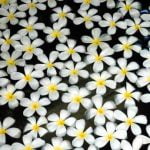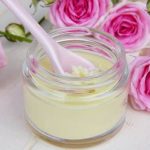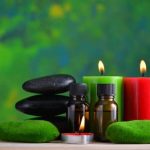Aromatherapy is a holistic healing treatment that uses natural plant extracts to promote health and well-being. Orthodox medicine, on the other hand, refers to the standard medical treatments and practices used by healthcare professionals. The integration of aromatherapy with orthodox medicine has become a topic of interest due to its potential benefits in enhancing patient care and treatment outcomes.
Aromatherapy involves the use of essential oils extracted from plants to improve physical, emotional, and mental well-being. These essential oils can be inhaled, applied topically, or ingested under the guidance of a qualified practitioner. As for orthodox medicine, it relies on evidence-based practices and pharmaceuticals to diagnose, prevent, and treat various medical conditions.
The combination of aromatherapy with orthodox medicine raises questions about how these two approaches can complement each other in healthcare settings. This article will delve into the principles behind aromatherapy, explore its physiological and psychological effects, examine its potential integration with orthodox medicine, address safety considerations, and present real-life case studies to illustrate its practical application in clinical settings.
Understanding Aromatherapy
Aromatherapy is a centuries-old practice that involves the use of essential oils and plant extracts to promote physical, emotional, and spiritual well-being. The use of aromatic plants for healing and relaxation can be traced back to ancient civilizations such as the Egyptians, Greeks, and Chinese. Aromatherapy operates on the principle that the aroma of certain essential oils can stimulate the limbic system in the brain, which is responsible for emotions, behavior, and long-term memory.
In addition to its historical roots, aromatherapy also has a foundation in modern scientific research. Studies have shown that inhaling certain essential oils can have a direct impact on the body’s physiological processes. For example, lavender oil has been found to have sedative effects, while peppermint oil may help alleviate symptoms of nausea. The application of essential oils topically can also have therapeutic benefits, such as reducing inflammation or improving skin conditions.
One of the key principles of aromatherapy is individualized treatment, taking into account a person’s unique physical and emotional needs. This holistic approach aligns with the goals of orthodox medicine in treating the whole person rather than just their symptoms. Aromatherapy’s emphasis on promoting relaxation and stress reduction can complement traditional medical treatments by supporting overall well-being and potentially enhancing the effectiveness of other interventions. This integration may lead to improved patient outcomes and satisfaction with care.
The question arises: How can aromatherapy work with orthodox medicine? By understanding the history and principles behind aromatherapy, as well as acknowledging its potential physiological and psychological effects, healthcare providers can explore opportunities for integrating this complementary therapy into traditional medical settings for the benefit of patients’ health and well-being.
The Science Behind Aromatherapy
Aromatherapy, often dismissed as a pseudoscience, has gained recognition in recent years for its potential physiological and psychological benefits. The use of essential oils in aromatherapy can have a direct impact on the body’s physiological processes, as well as influence an individual’s mood and mental state. Understanding the science behind aromatherapy is crucial for exploring how it can work alongside orthodox medicine to enhance overall well-being.
Physiologically, essential oils used in aromatherapy are believed to exert their effects through inhalation or absorption into the skin. When inhaled, the molecules of these oils stimulate olfactory receptors in the nose, which then send signals to the brain’s limbic system. This region of the brain is involved in regulating emotions, behaviors, and long-term memory. As a result, certain essential oils can elicit specific psychological responses, such as relaxation, alertness, or stress reduction.
In addition to their psychological effects, some essential oils have been found to possess antimicrobial and anti-inflammatory properties. For example, tea tree oil has been shown to have antibacterial and antiviral effects when used topically. Moreover, lavender oil has demonstrated anxiolytic and sedative effects in clinical studies.
These physiological benefits make essential oils a promising complement to orthodox medical treatments. Research suggests that when used thoughtfully and under appropriate supervision, aromatherapy can be incorporated into healthcare settings to support patients’ overall well-being.
| Essential Oil | Physiological Effect |
|---|---|
| Tea Tree Oil | Antibacterial and antiviral effects when used topically |
| Lavender Oil | Anxiolytic and sedative effects in clinical studies |
Integration With Orthodox Medicine
Aromatherapy has gained popularity as a complementary therapy to traditional medical treatments, and many people wonder how it can work with orthodox medicine. While aromatherapy is considered an alternative or holistic approach, there is potential for synergy between aromatherapy and traditional medical treatments.
Understanding the Role of Aromatherapy
Aromatherapy involves the use of essential oils derived from plants to promote physical and psychological well-being. These oils can be inhaled, applied topically, or used in massage therapy. The aromatic compounds in essential oils are believed to have therapeutic effects on the body and mind. When integrated with orthodox medicine, aromatherapy can support conventional treatments by addressing symptoms such as pain, nausea, anxiety, and stress.
Potential Benefits of Integration
When used in conjunction with orthodox medicine, aromatherapy can enhance the overall patient experience. Essential oils have been shown to have calming effects, which may help patients feel more relaxed during medical procedures or while managing chronic conditions. Additionally, some essential oils have antimicrobial properties that could aid in preventing infections. By incorporating aromatherapy into clinical settings, healthcare providers can offer a more holistic approach to patient care.
Collaboration Between Practitioners
In order for aromatherapy to effectively work alongside orthodox medicine, it is important for healthcare providers to communicate and collaborate with qualified aromatherapists. This ensures that essential oils are used safely and appropriately to complement existing medical treatments.
Healthcare professionals should also be aware of any potential interactions between specific essential oils and medications that patients may be taking. Open dialogue and a team-based approach between practitioners of both modalities are essential for the successful integration of aromatherapy with orthodox medicine.
By understanding the principles of aromatherapy and its potential benefits when integrated with orthodox medicine, healthcare providers can explore the use of this complementary therapy in clinical settings while ensuring patient safety and well-being.
Aromatherapy in Clinical Settings
Benefits of Aromatherapy in Healthcare Facilities
Aromatherapy has become increasingly popular in healthcare settings due to its potential benefits for patients. Essential oils, when used properly, can help create a calming and soothing environment, which can be especially beneficial for patients undergoing stressful or uncomfortable medical procedures. Additionally, certain essential oils have been found to have antimicrobial properties, which could contribute to maintaining a healthier environment in hospitals and healthcare facilities.
Integration With Traditional Medical Treatments
One of the key aspects of using aromatherapy in clinical settings is its integration with traditional medical treatments. It is important for healthcare professionals to recognize the potential synergy between aromatherapy and orthodox medicine. By incorporating essential oils into patient care plans, healthcare providers can enhance the overall experience for patients and possibly even improve treatment outcomes.
Challenges and Considerations
While aromatherapy can offer numerous benefits in clinical settings, it is crucial to approach its use with caution. Some patients may have sensitivities or allergies to certain essential oils, and there is also the potential for interactions with medications. Healthcare facilities that incorporate aromatherapy should develop clear guidelines and protocols to ensure the safe and effective use of essential oils alongside traditional medical treatments.
Overall, the integration of aromatherapy with orthodox medicine in clinical settings requires thoughtful consideration and collaboration among healthcare professionals. When used judiciously and under the guidance of trained practitioners, aromatherapy can complement traditional medical treatments and contribute to a more holistic approach to patient care.
Safety and Precautions
Aromatherapy, when used responsibly, can be a complementary treatment to orthodox medicine. However, it is important to understand the potential risks and side effects of aromatherapy, especially when combined with traditional medical treatments. Here are some safety tips and precautions to consider when using aromatherapy alongside orthodox medicine:
- Consult a healthcare professional: Before incorporating aromatherapy into your treatment plan, it is essential to consult with your healthcare provider. They can provide guidance on how aromatherapy may interact with any medications or medical conditions you have.
- Dilution and dosage: Essential oils are highly concentrated and should be diluted before direct application to the skin or inhalation. Improper use of essential oils can lead to skin irritation, allergic reactions, or respiratory issues.
- Quality of essential oils: It is crucial to use high-quality essential oils sourced from reputable suppliers. Poor quality or adulterated oils may contain harmful chemicals that can be detrimental to your health.
Understanding the potential risks and side effects of aromatherapy in combination with orthodox medicine is vital for ensuring the safety and effectiveness of treatment. By following these safety precautions, individuals can integrate aromatherapy into their healthcare regimen while minimizing any potential adverse effects.
When considering the integration of aromatherapy with orthodox medicine, it is important to be aware of potential drug interactions. Some essential oils have been found to interact with certain medications, affecting their efficacy or causing adverse reactions.
For example, citrus essential oils such as grapefruit oil can interfere with the metabolism of certain drugs, leading to higher levels of medication in the bloodstream than intended. Therefore, it is crucial for individuals using aromatherapy alongside orthodox medicine to disclose all treatments and medications they are currently undergoing to their healthcare provider.
By understanding the potential risks and taking necessary precautions, individuals can safely benefit from the synergy between aromatherapy and orthodox medicine without compromising their health.
Case Studies
Aromatherapy has been gaining recognition in clinical settings for its potential benefits when combined with orthodox medicine. There have been numerous case studies that demonstrate the positive impact of integrating aromatherapy into traditional medical treatments. These real-life examples shed light on how aromatherapy can complement orthodox medicine and improve patient outcomes. Here are some compelling case studies showcasing the benefits of this integration:
- Case Study 1: A patient undergoing chemotherapy for cancer experienced significant nausea and anxiety as side effects of the treatment. By incorporating aromatherapy using anti-nausea essential oils such as ginger and peppermint, the patient reported a reduction in nausea and an overall sense of calm.
- Case Study 2: In a hospital setting, aromatherapy was introduced to help manage post-operative pain and discomfort in surgical patients. The use of lavender essential oil diffused in the air resulted in decreased pain scores and improved relaxation among the patients.
- Case Study 3: An individual suffering from chronic stress and insomnia sought conventional medical treatment along with complementary aromatherapy sessions using calming essential oils such as chamomile and bergamot. The combination of orthodox medicine and aromatherapy led to better sleep quality and reduced symptoms of stress.
These case studies demonstrate the potential for synergistic effects when combining aromatherapy with orthodox medicine. They provide valuable insights into how essential oils can be used as adjunct therapies to enhance the overall well-being of patients undergoing medical treatments.
It is important to note that these examples highlight the collaborative approach between healthcare providers trained in both conventional medicine and holistic practices. As more research is conducted, these case studies serve as anecdotal evidence supporting the integration of aromatherapy with orthodox medicine, paving the way for further exploration in clinical settings.
By examining these real-life cases, we gain a deeper understanding of how aromatherapy can work alongside orthodox medicine to address various health concerns, ultimately benefiting patients through a comprehensive approach to their well-being.
Conclusion
In conclusion, the integration of aromatherapy with orthodox medicine presents a promising opportunity for enhancing patient care and treatment outcomes. By understanding the principles and science behind aromatherapy, healthcare providers can explore the potential synergy between essential oils and traditional medical treatments. Through careful consideration of safety and precautions, as well as incorporating aromatherapy in clinical settings, patients may experience holistic benefits that contribute to their overall well-being.
The use of aromatherapy in hospitals and healthcare facilities has shown positive results, with many individuals reporting reduced stress, improved sleep, and relief from various symptoms. Real-life case studies have demonstrated how the combination of aromatherapy and orthodox medicine can complement each other, leading to better patient experiences and potentially improving treatment effectiveness.
As the field of integrative medicine continues to evolve, it is important to recognize the potential benefits of incorporating aromatherapy alongside orthodox medicine. By exploring how essential oils can work in conjunction with traditional medical approaches, healthcare professionals can provide a more comprehensive and personalized approach to patient care. However, it is crucial to acknowledge that further research and collaboration between professionals in both fields are necessary to continue understanding how aromatherapy can work effectively alongside orthodox medicine.
Frequently Asked Questions
Why Is Aromatherapy a Complementary Medicine?
Aromatherapy is considered a complementary medicine because it is often used in conjunction with traditional medical treatments to support the overall well-being of an individual. It focuses on the use of essential oils to promote relaxation, reduce stress, and alleviate certain symptoms.
What Is a Scientific Benefit of Aromatherapy in Relation to Allopathic Medicine?
One scientific benefit of aromatherapy in relation to allopathic medicine is its ability to potentially reduce anxiety and improve sleep quality. Studies have shown that certain essential oils, when used in aromatherapy, can have calming effects on the mind and body, which can complement traditional medical approaches for anxiety and sleep disorders.
What Is the Difference Between Aromatherapy and Herbal Medicine?
The main difference between aromatherapy and herbal medicine lies in their applications and methods of use. Aromatherapy primarily involves the use of essential oils through inhalation or topical application, while herbal medicine utilizes various parts of plants (such as leaves, roots, or flowers) to create teas, tinctures, or capsules for internal consumption.
Both approaches harness the natural healing properties of plants but in different ways.

Are you looking for a natural way to improve your health and wellbeing?
If so, aromatherapy may be the answer for you.





